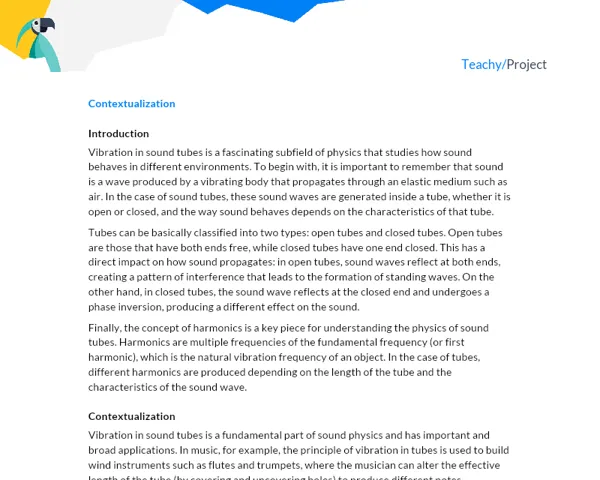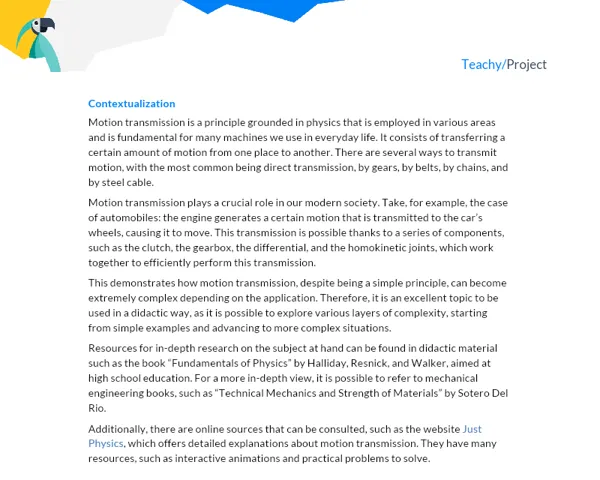Contextualization
Bohr's Model, also known as Bohr's atomic model, was a theoretical proposal about atomic structure developed by the Danish physicist Niels Bohr in 1913. This model is fundamental to understand modern physics, especially quantum mechanics and the principles of the hydrogen atom.
Bohr's Model proposes that electrons orbit the atom's nucleus in defined paths, that is, orbits with fixed energy. This theory also postulates that energy is transferred only in certain well-defined quantities, which Bohr calls quanta. This means that electrons can move from one orbit to another, but only in quantized jumps and not in a smooth gradient.
Introduction
In physics and chemistry, Bohr's Model is fundamental for understanding the concepts of atomic energy and light. It forms the basis for our understanding of atomic emission spectra and their properties. Furthermore, this atomic model is the basis for understanding the behavior of electrons in atoms, molecules, and solids. Therefore, it has broad applications in areas such as condensed matter physics, quantum chemistry, and materials studies.
Although Bohr's Model is not the most updated model of the atom, it is still frequently used as a simplification to explain atomic structure. It provides a first approach to understanding how electrons behave in the atom and how interactions between electrons and photons lead to the production of light.
To deepen your knowledge on this topic, we suggest the following resources:
- The Encyclopedia Britannica: Article on Bohr's Model
- YouTube Channel of Professor André Azevedo da Fonseca: Video on Bohr's Model
- Physics portal of the Federal University of Rio Grande do Sul: Article on Bohr's Model
Practical Activity
Activity Title: The Light Behind Atoms - A Study on Bohr's Model
Project Objective
Explore and understand Bohr's Model through a practical activity involving the creation of an interactive infographic and a detailed written report.
Detailed Project Description
Students will be divided into groups of 3 to 5 people, with the project estimated to last up to four hours per student. The project's goal is to create an interactive infographic about Bohr's Model that explains the theory and concepts in a simplified manner, along with a detailed report on the Model.
Students should research in-depth about Bohr's Model, including its history, application, theory, central concepts, experimental evidence, limitations, and modern applications. This infographic should be clear, accurate, creative, and visually appealing. Additionally, students must create a detailed report on Bohr's Model, containing Introduction, Development, Conclusions, and Bibliography.
Required Materials
- Internet access for research
- Graphic design software to develop the infographic (Canva, Piktocart, Microsoft PowerPoint, etc.)
- Word processing software for the written report (Microsoft Word, Google Docs, etc.)
Step-by-Step Guide for the Activity
- Form groups of 3 to 5 students.
- Conduct comprehensive and detailed research on Bohr's Model, using a variety of sources and resources.
- Gather the most relevant and interesting information to include in the infographic and report.
- Plan and create the infographic, ensuring it is visually appealing and easy to understand.
- Write the report following the provided guidelines, ensuring all sections (Introduction, Development, Conclusions, and Bibliography) are complete and well-written.
- Review both the infographic and the report to ensure clarity, accuracy, and originality.
- Submit the activity within a one-week deadline.
Project Deliverables
At the end of the project, students must submit the interactive infographic they created, along with the detailed written report. The evaluation will be based on both the presented content and the ability to present the information clearly and attractively.
The report should follow the proposed structure:
- Introduction: In this section, students should contextualize Bohr's Model, its relevance, application, and the objective of this project.
- Development: The student should explain Bohr's Model theory in detail, indicate the methodology used to create the infographic, and discuss the interesting and relevant aspects of the model.
- Conclusions: Students should summarize their findings, learnings, and conclusions about Bohr's Model and the process of creating the infographic and report.
- Bibliography: Students should indicate all sources used for research, including books, websites, videos, among others.
Thus, through the completion of this project, it will be possible not only to assess students' theoretical knowledge of Bohr's Model but also important skills such as teamwork, time management, communication, and creative thinking.


